”Today we have a splendid semi-acoustic model, one of Yamaha's first experiences in the search for a personal design, which distinguished the aesthetics of its instruments from others.
Lorenzo
As Yamaha is the oldest still existing musical instrument manufacturer in Japan (the factory was born in 1888 as a producer of pipe organs and later pianos, and then moved on to guitars to all other electric and electronic instruments), there is no wonder it has produced truly excellent guitars.
Its old classics and acoustics are exceptional instruments, with a remarkable sound projection and dynamics, while the electric ones have always fascinated, not only for innovation and technical quality, but also for the peculiarity of the design.
The electric ones were produced starting from 1966 and over the years many different models saw the light, of which the SG played by Santana became famous but also a whole series of instruments related to a very specific genre, surf rock.
Among these were the first solid-body SGs (not to be confused with the Santana SG, which will be launched later) and the semi-acoustic SA series, with the splendid SA-20s. 30, 50 and SA 15 and 15D, hollow body versions of SG solid bodies.
The SA-15 and SA-15D differ only in the finishes, being the first less decorated than the second which instead has an elaborate binding around the top/back and a simple binding along the neck, in which we find inlaid frets on the upper part of the fingerboard. instead of the dot of her sister.
The SA-15D is a hollow body guitar inspired by The Beatles’ Rickenbacker and The Ventures’ Mosrite, which were the hottest bands in Japan at the time.
The sound is dark, woody and warm but well defined. The fully hollow mahogany body and bolt-on neck give this guitar a slightly thicker and darker tone than the more common SA30 and SA50.
The neck, also in mahogany and with a rosewood fingerboard, has the typical comfort of Yamaha instruments and the headstock has a simple and attractive design, very harmonious in the lines.
The controls are the typical two volumes + two tones and we find a classic three-way switch for the selection of the two high sensitivity noiseless pick-ups, with anisotropic ferrite magnet and adjustable poles.
The tremolo is a typical Bigsby-like Japanese style, with a faux wood inlay on the string retainer. The tuners’ design denotes simplicity and finesse.
The overall line of the body recalls a large sea wave in the act of closing on itself, recalling a sort of extreme and harmonious reinterpretation of the classic telecaster design.
The harmonic soundhole is also very beautiful and particular, instead of the typical “f”, it too reproduces the shape of a wave.
The SA-15D seems to have had a short production period, ranging from 1968/69 to 1972, but there are even those who say that it was only produced in a single year or two.
Comparing the serial number with the various guides, however, the guitar we have here seems to date back to 1973.
This guitar had a quite adventurous life, having traveled in a big band around Europe and on cruise ships in the 70s.
She then went through the orchestra and piano bar’s life to take a refreshment stop in Serena’s hands and finally continue on to other shores, continuing her adventurous life!
Yamaha SA-15D overview
… but how is the sound?
Demos of the sound of the Yamaha SA-15D and SA-30 to compare their sound in clean, overdrive, fuzz and overdriven amp.

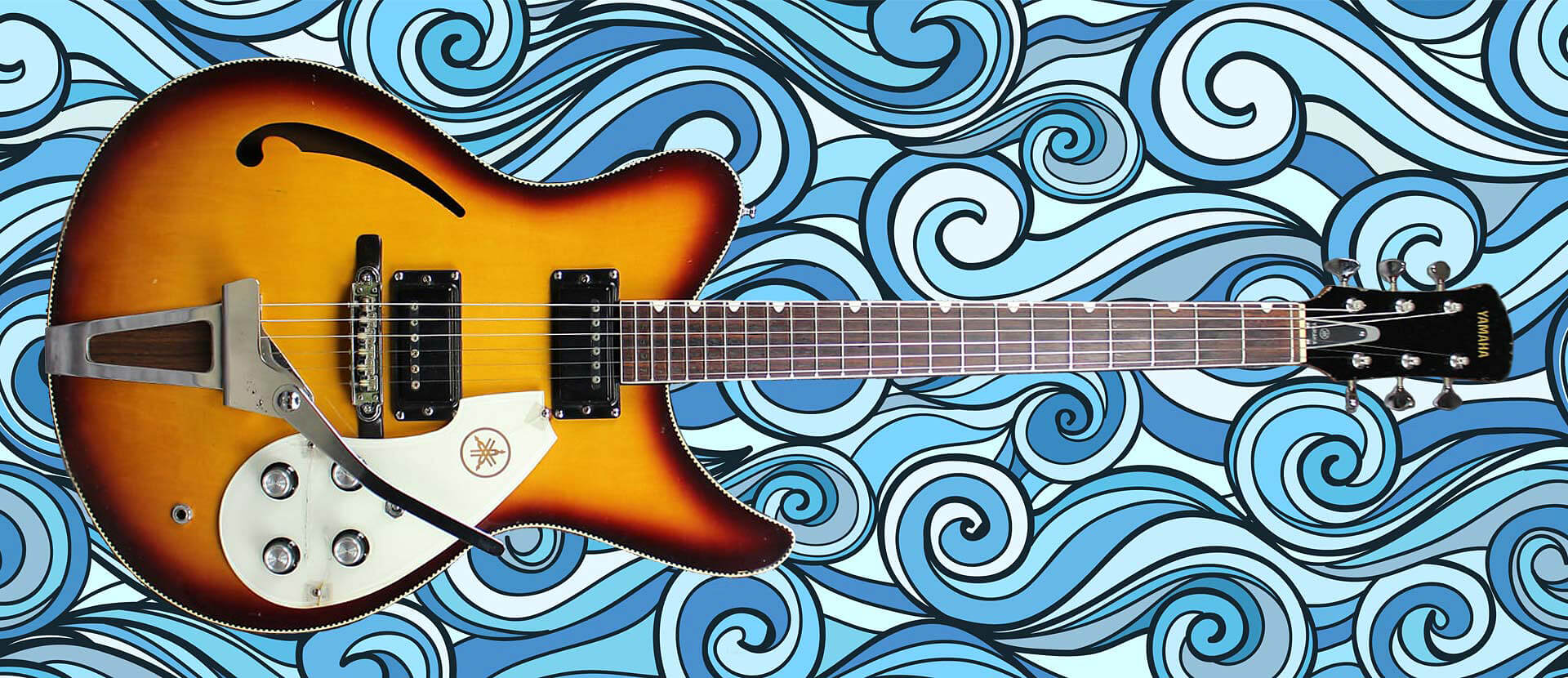
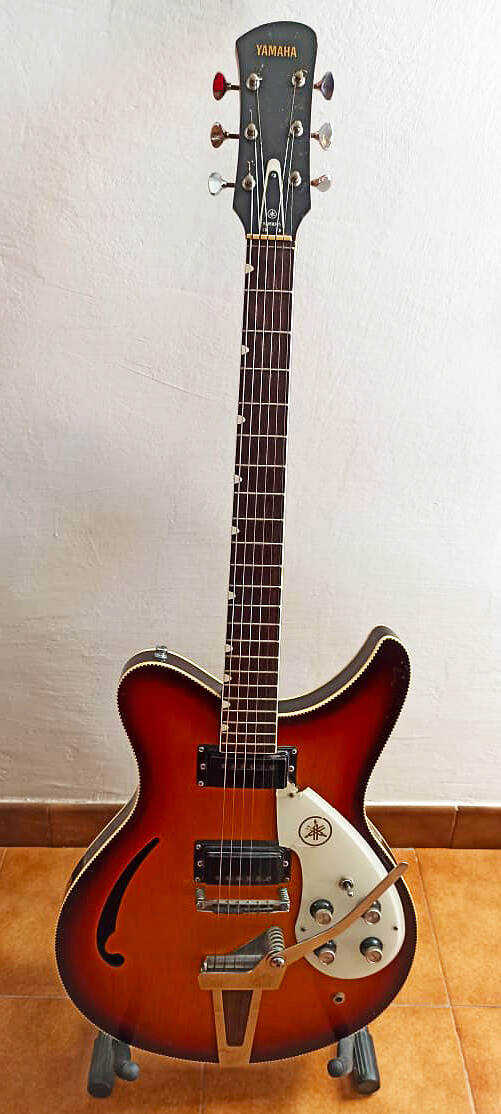
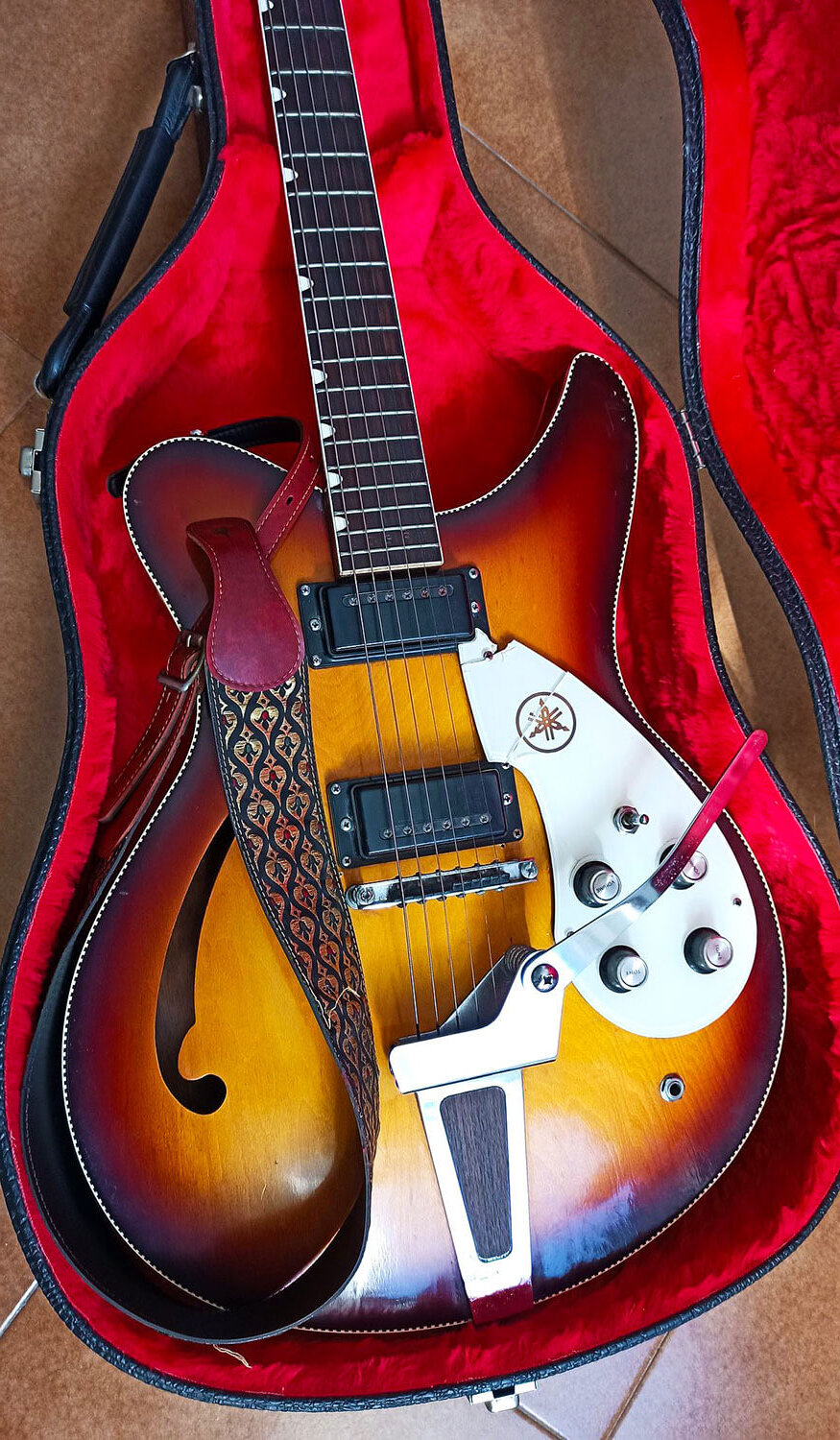
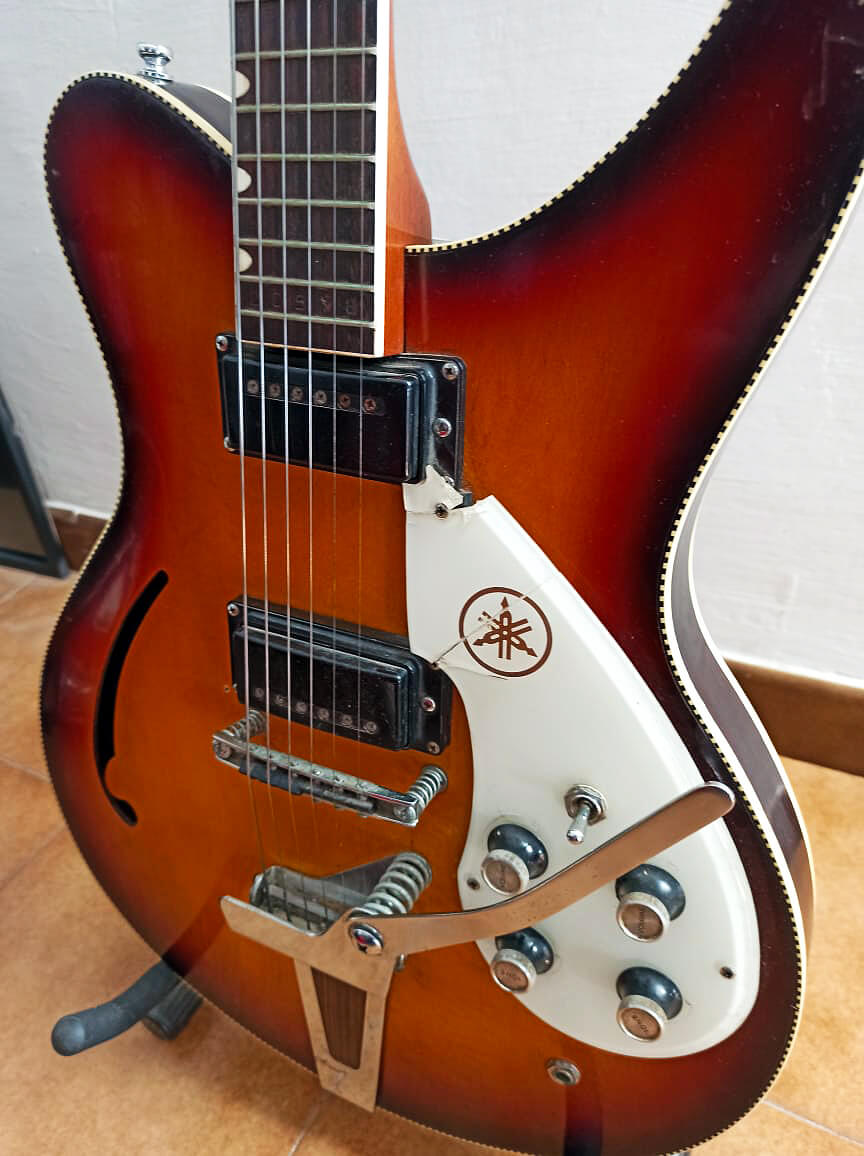

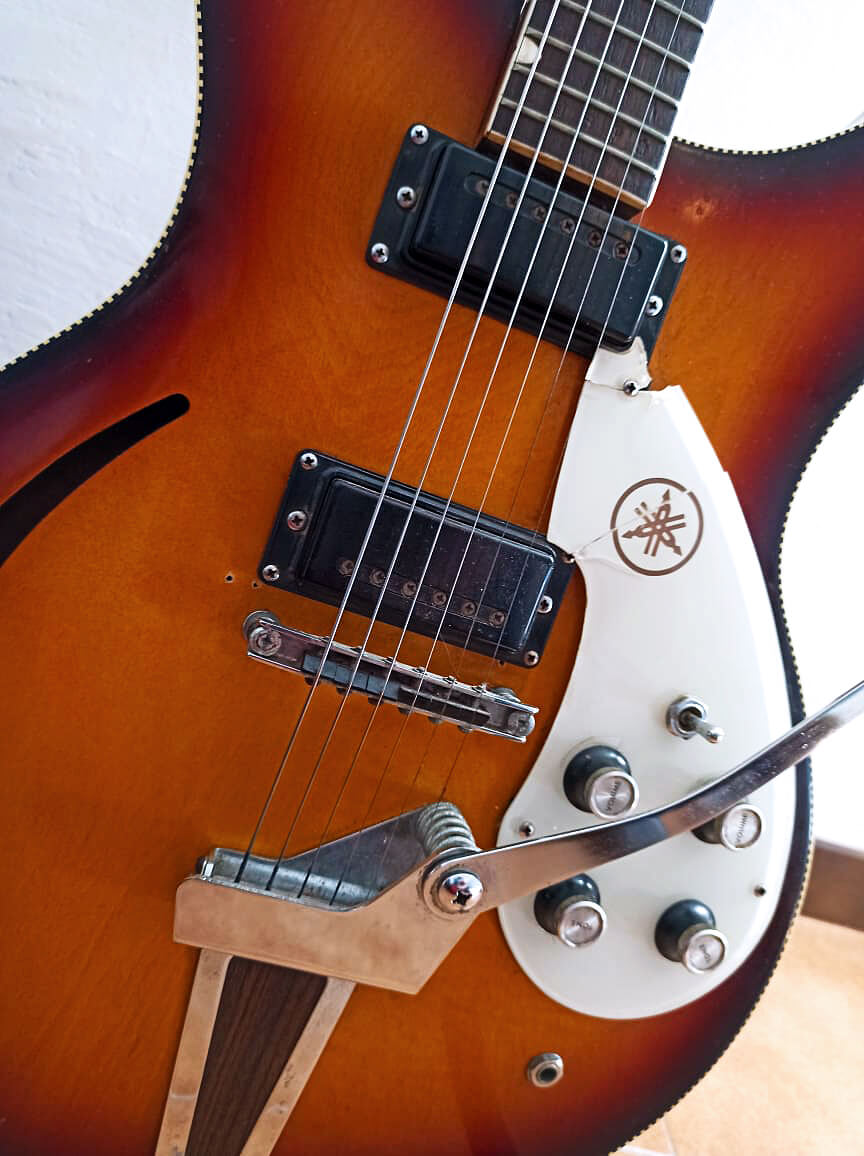
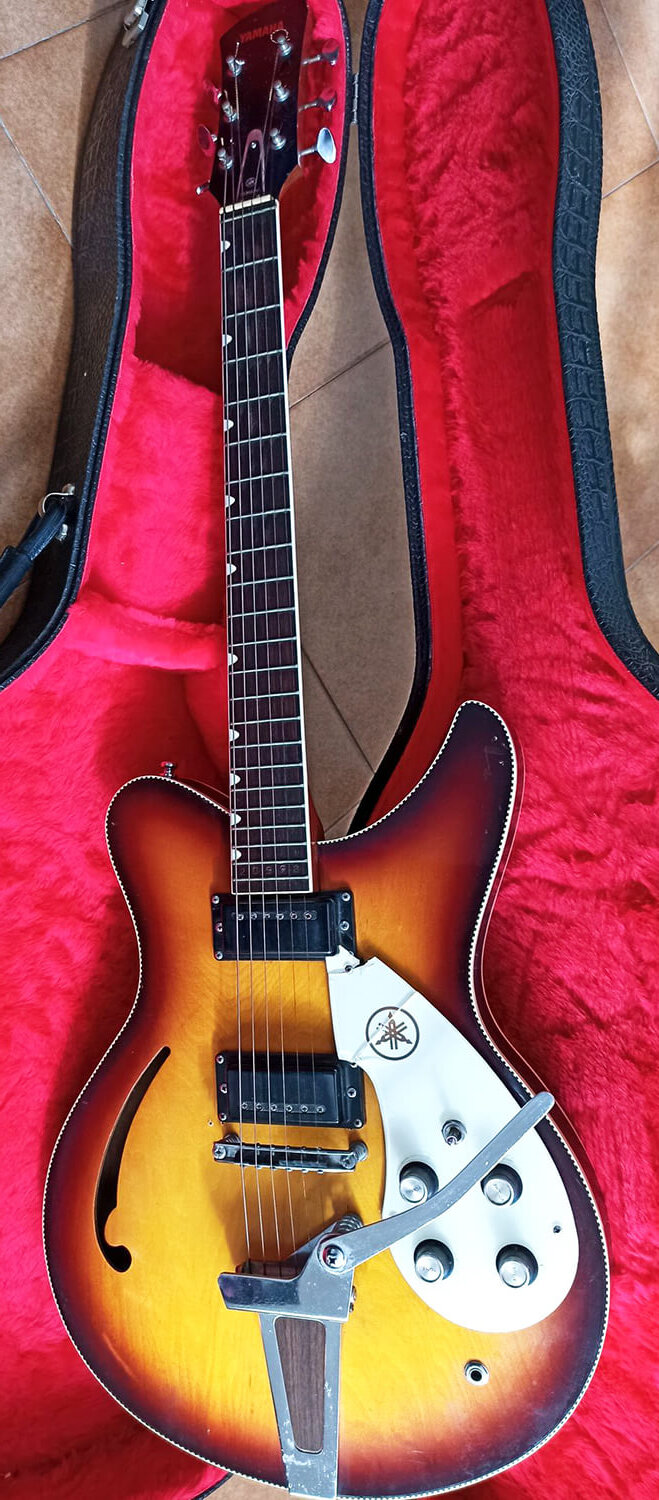
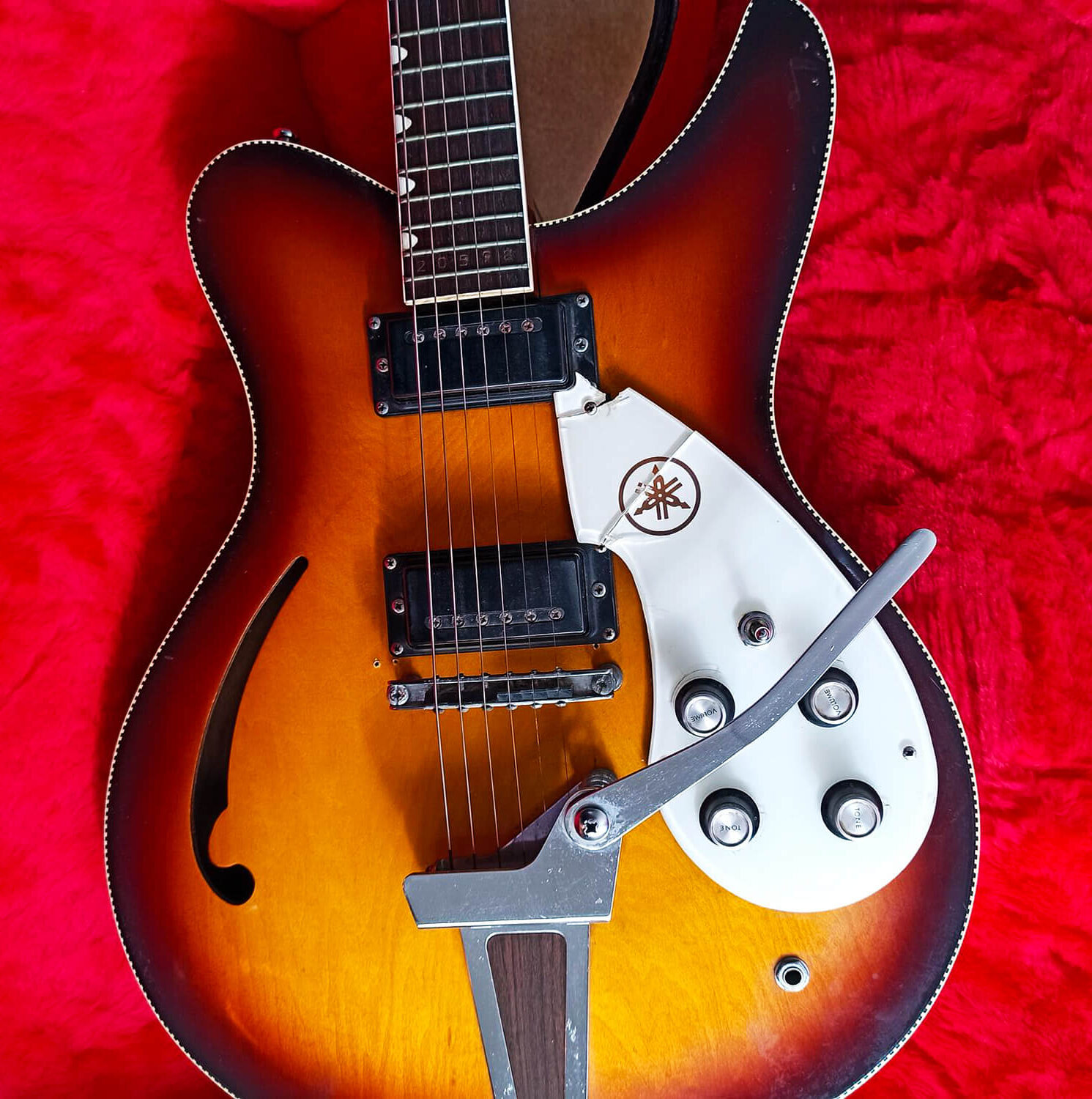
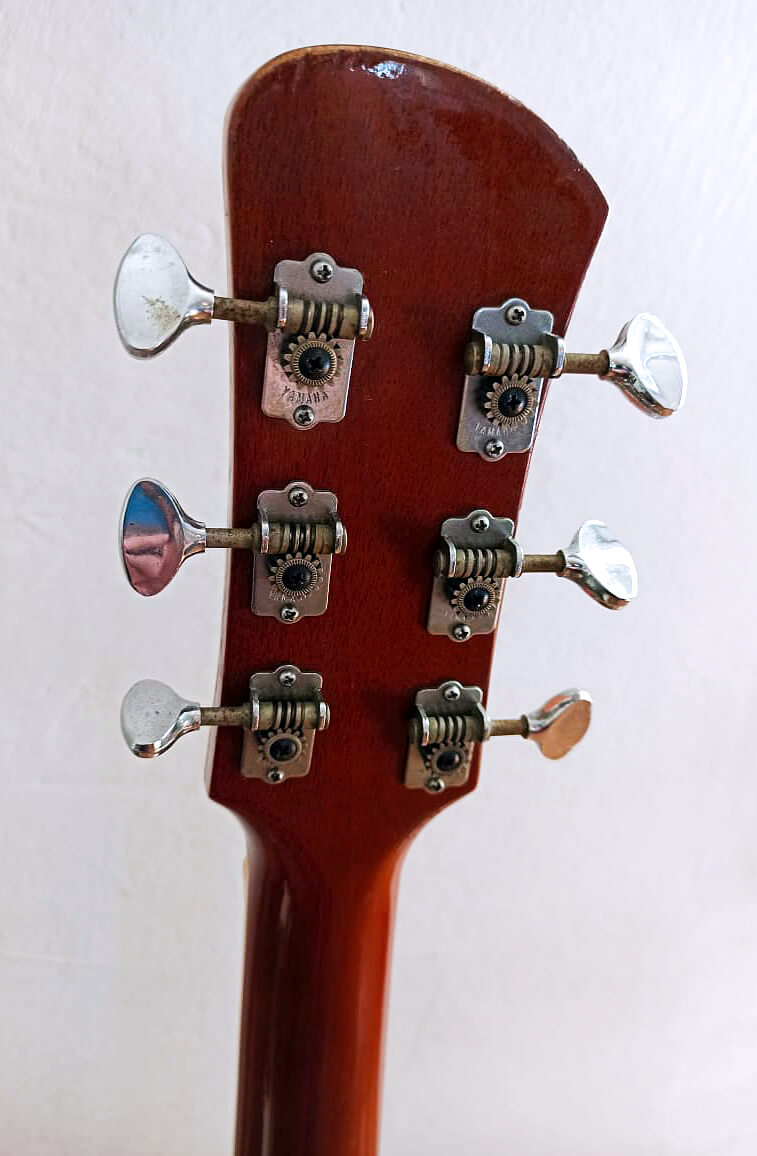
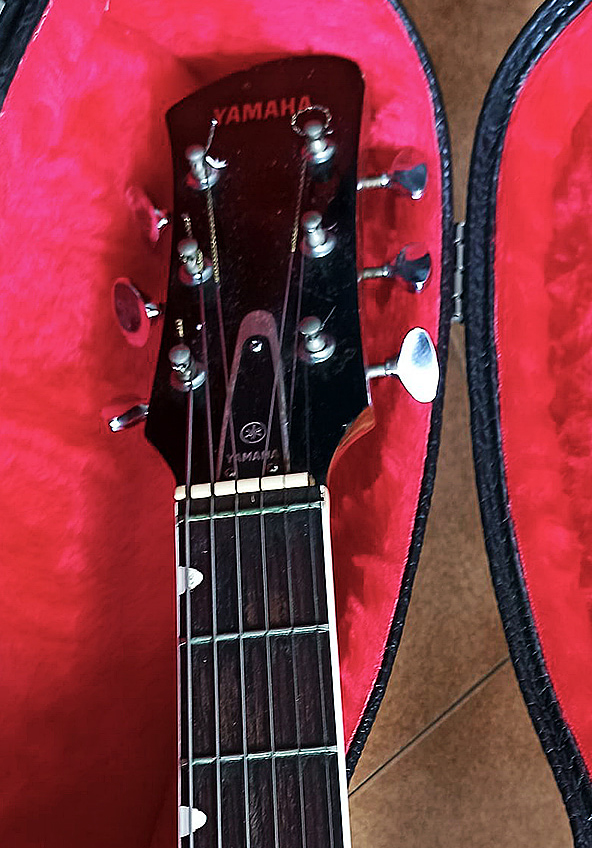
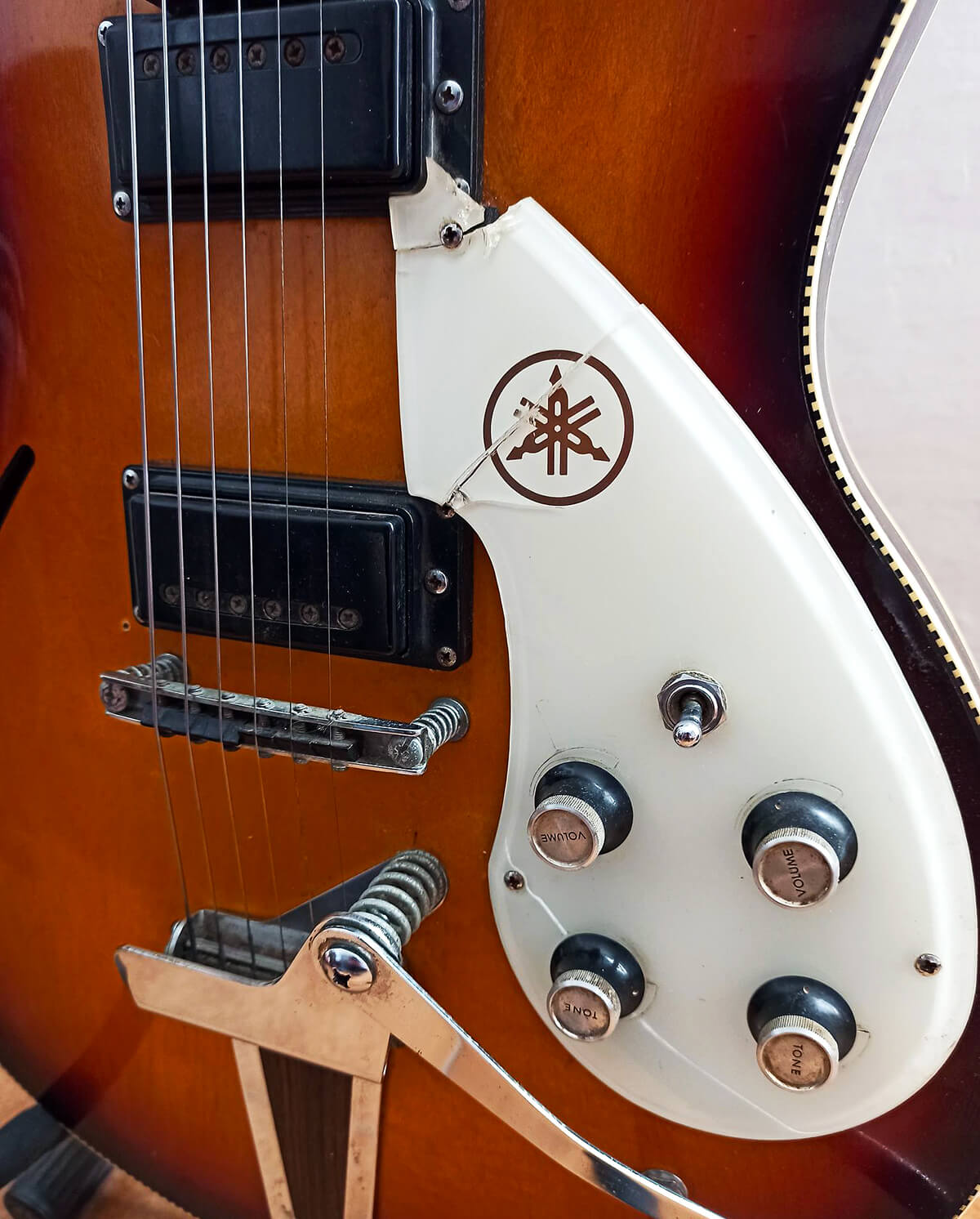
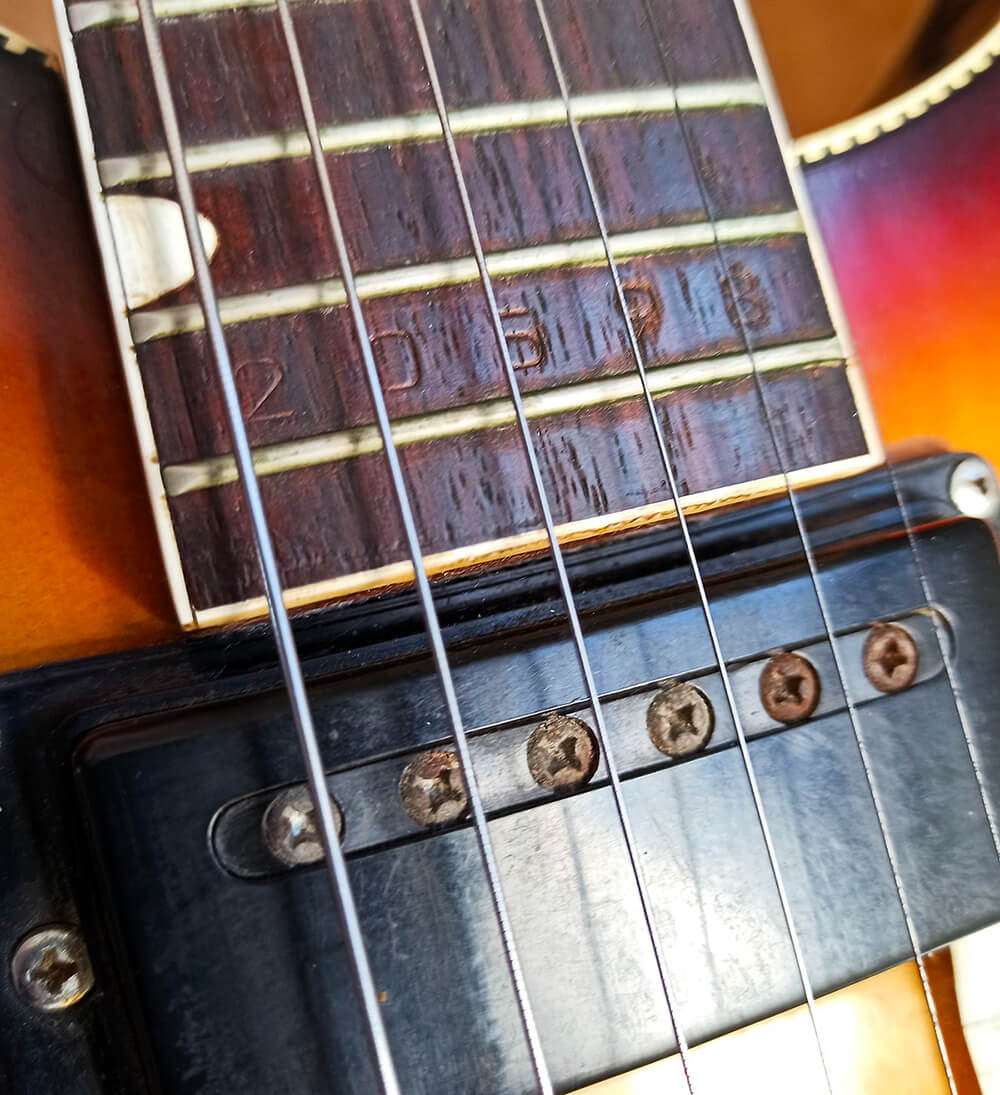
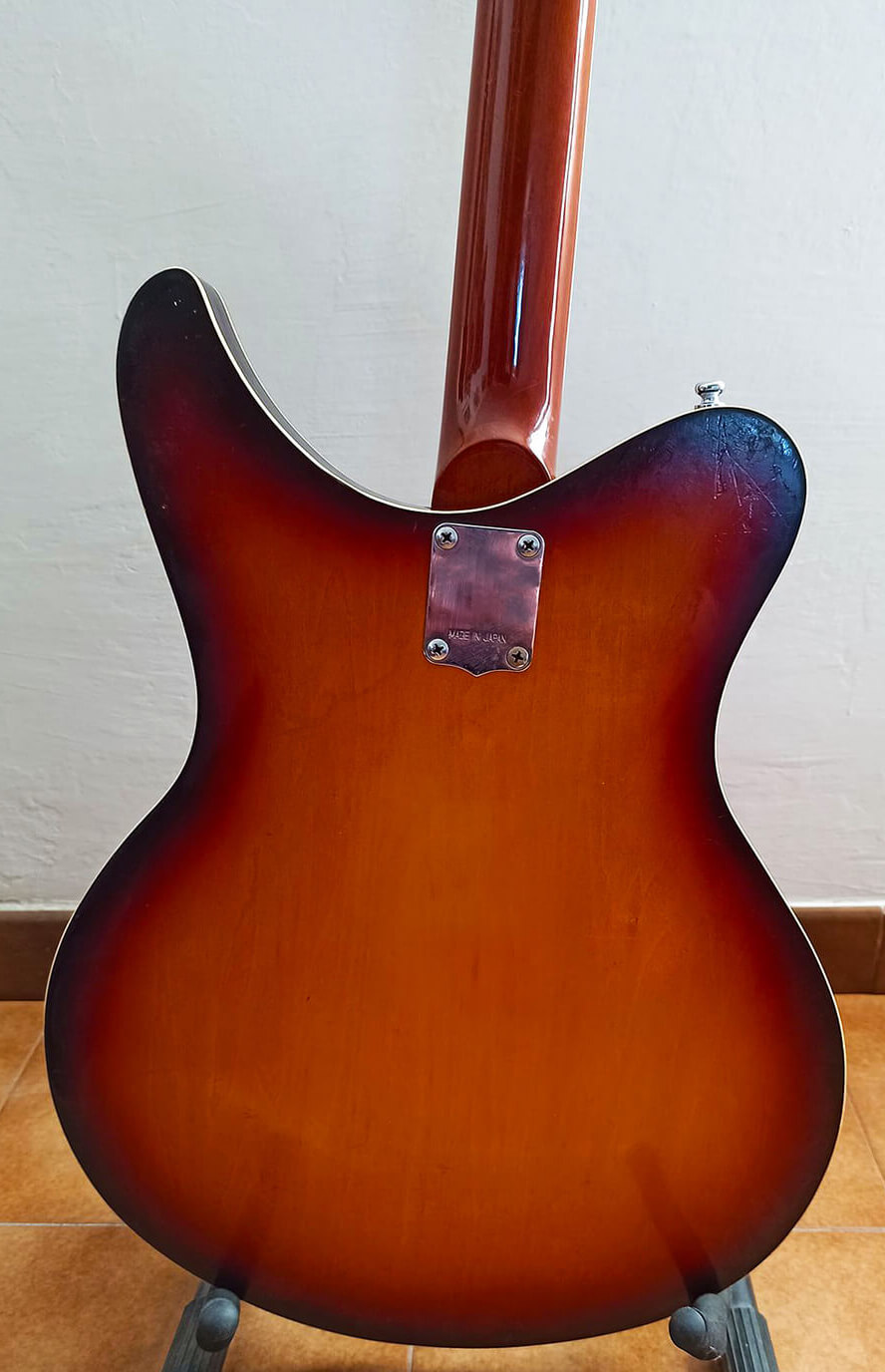
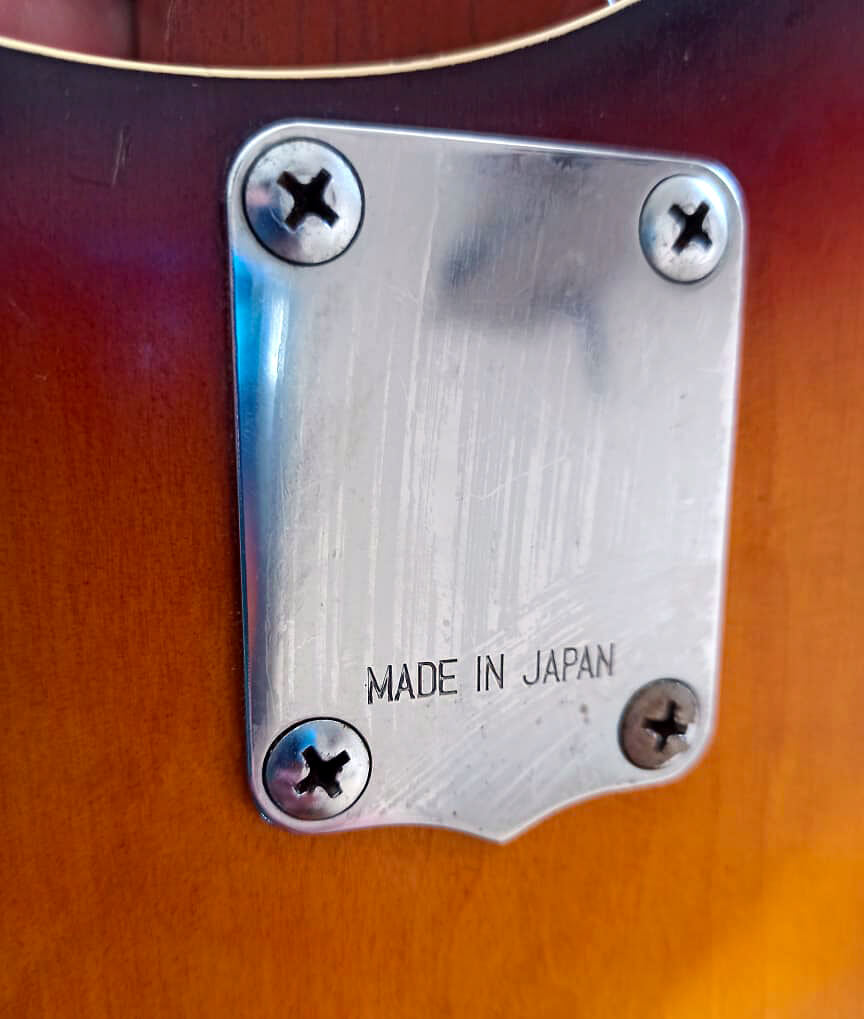



Ciao ma la Yamaha SA-15D ce l’hai ancora in vendita?
Ciao, il proprietario l’ha venduta lo scorso anno.